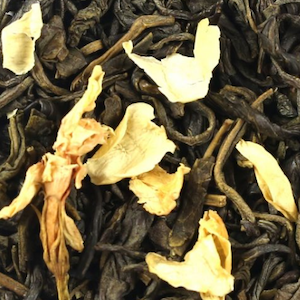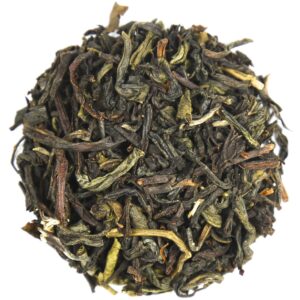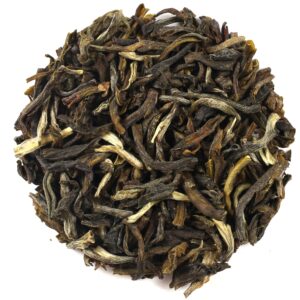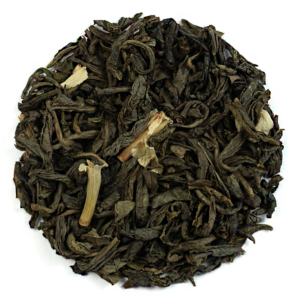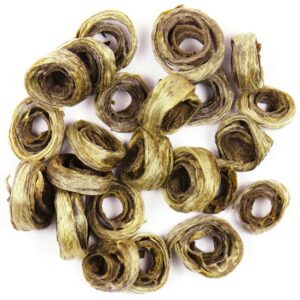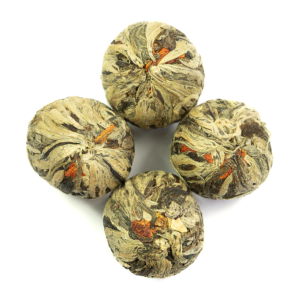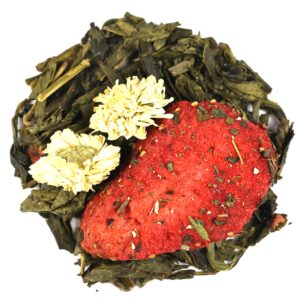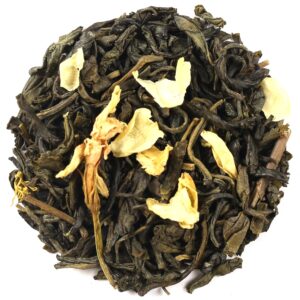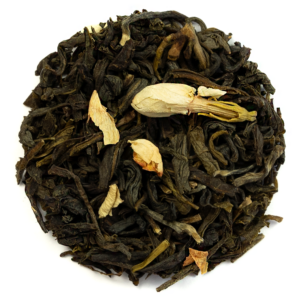Jasmine Tea
Jasmine Tea is either a Flavoured Green or White Tea, or a standalone Herbal Tea. These alluring, indeed mesmerising flowers make for a true delight no matter what you decide.
We stock several types here at The Kent and Sussex Tea and Coffee Company, so the choice is very much yours. Each one we pack fresh to order here at our Kent-based factory, ensuring the refreshing taste of quality every time you brew.
Showing 1–12 of 17 results
-

Celestial Jasmine Tea
From £3.81— or subscribe and save 10%Select options This product has multiple variants. The options may be chosen on the product page -

Jasmine Jade Ring Green Tea
From £16.49— or subscribe and save 10%Select options This product has multiple variants. The options may be chosen on the product page -
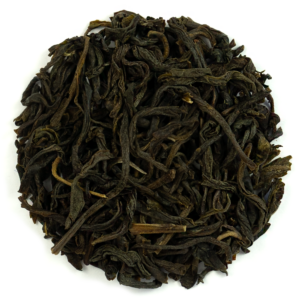
Organic Jasmine Green Tea
From £3.65— or subscribe and save 10%Select options This product has multiple variants. The options may be chosen on the product page -
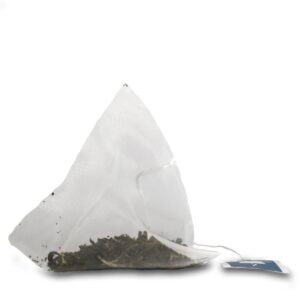
Jasmine Pyramid Tea Bags
From £1.48— or subscribe and save 10%Select options This product has multiple variants. The options may be chosen on the product page
Jasmine Tea Origins and History
Loose Leaf Jasmine Tea is a much-loved infusion. It starts off as a genus of shrubs and vines called Jasminum, which belongs to the olive family, Oleaceae. Over the years, it has found itself in a variety of household and commercial products, including soaps, shampoos, bath bombs, lotions, perfumes and potpourris. But nothing is quite like enjoying it brewed to perfection.
Its history dates back several centuries, having originated from Persia (modern-day Iran), only to eventually travel to China via trade routes. The South-Song Dynasty (1127-1279 CE) was when it first appeared as a Tea. However, it wasn’t until the Ming Dynasty (1368-1644), a time for all things floral, that it became widespread. The methods applied to making it have changed little since then.
In the early afternoons of June, July and August, workers carefully hand-pick the buds when the sun is out and the dew has evaporated. Only buds due to bloom that same evening make the cut. Workers then store the soon-to-be-flowers in a dry place until the right time draws close. Finally, the blossoms open in the cool night air, releasing their signature scent.
Workers place the flowers into basket trays, then layer them over Tea leaves for the “scenting” process. After some hours, the Tea underneath absorbs the fragrance and distinct flavour of jasmine. The finished product is, quite simply, exquisite. But you probably want to know, “What does it like?” What, exactly, can you expect when you make a cuppa of it?
What Does Jasmine Tea Taste Like?
The most popular type of Jasmine Tea is, unquestionably, scented Green Tea. This will offer delightfully floral notes with grassy undertones. Should you choose scented White Tea, then much of the same is true, although with smoother, gentler, and somewhat sweeter characteristics. And then, there is standalone Herbal Tea, which has less grassiness and more floweriness.
Jasmine Tea Caffeine
Differences between varieties don’t stop at their respective flavours. Green Jasmine Tea leaves have more caffeine (30-mg per serving) than their White counterparts (15-mg). Meanwhile, it is 100% void of the stimulant. It ultimately depends on what you want from your infusion. Should you need an extra boost first thing in the morning, then you know where to look. If not, we also have you covered.
Is Jasmine Tea Good for You?
Regardless of the specific type, contains an abundance of vitamins, minerals and other antioxidants. These include, but are not limited to, Vitamins A, B, C and D, Manganese, Calcium, Theanine, Potassium, Magnesium, Epigallocatechin Gallate (EGCG) and Zinc. They are your vital key to understanding and, in time, with frequent consumption, experiencing Jasmine Tea benefits.
Studies indicate that Jasmine Tea Benefits can, among other qualities, promote skin health, improve digestion, relieve stress and mild anxiety, and even reduce diabetes risks. If that wasn’t enough, preliminary evidence suggests that it boosts the metabolism of fat cells, enabling the body to burn fat quicker and more efficiently. The result is weight loss. What more could you want from your cuppa?
How to Make Jasmine Tea
You know the facts and figures. All that’s left now is to learn how to make Jasmine Tea. There are a couple of things you should first keep in mind. Jasmine Tea’s brewing temperature needs to be below boiling so as not to burn the leaves.
How long you allow it to steep, too, will play a considerable role. Any longer than 2-3 minutes, and it might taste bitter. Now you can follow these instructions:
1, Put Loose Leaf Tea into a Tea Infuser or Filter.
2, Place the accessory in a mug or cup.
3, Boil fresh water and allow it to cool to temperatures between 80 and 90°C.
4, Infuse for 1 to 3 minutes.
How to Drink Jasmine Tea: Do you put milk in Jasmine Tea? We wouldn’t recommend it. Instead, serve it without additions to fully appreciate its incredible allure. You won’t regret it.

 Loose Leaf Tea
Loose Leaf Tea Pyramids
Pyramids Tea Bags
Tea Bags Africa
Africa Assam
Assam Ceylon
Ceylon Chinese
Chinese Darjeeling
Darjeeling European
European Indian
Indian Japan
Japan Nepal
Nepal South East Asia
South East Asia Ayurveda Tea
Ayurveda Tea Black Tea
Black Tea Chai Tea
Chai Tea Flowering Tea
Flowering Tea Fruit Tisanes
Fruit Tisanes Green Tea
Green Tea Herbal Tea
Herbal Tea Matcha Tea
Matcha Tea Oolong Tea
Oolong Tea Organic Tea
Organic Tea Pu erh Tea
Pu erh Tea Rooibos Tea
Rooibos Tea White Tea
White Tea Asian Coffee
Asian Coffee Caribbean Coffee
Caribbean Coffee Central American Coffee
Central American Coffee South American Coffee
South American Coffee Coffee Blends
Coffee Blends Decaffeinated Coffee
Decaffeinated Coffee Espresso Coffee
Espresso Coffee Ethically Sourced Coffee
Ethically Sourced Coffee Flavoured Coffee
Flavoured Coffee Organic Coffee
Organic Coffee Single Origin Coffee
Single Origin Coffee Chocolate 1
Chocolate 1 Chocolate 2
Chocolate 2 Chocolate 3
Chocolate 3 Chocolate 4
Chocolate 4 Chocolate 5
Chocolate 5 Chocolate 6
Chocolate 6 Chocolate 7
Chocolate 7 Chocolate 8
Chocolate 8 Chocolate 9
Chocolate 9 Loose Tea Filters
Loose Tea Filters Tea Accessories
Tea Accessories Tea Bricks
Tea Bricks Tea Caddies
Tea Caddies Tea Caddy Spoons
Tea Caddy Spoons Tea Gift Ideas
Tea Gift Ideas Tea Infusers
Tea Infusers Tea Strainers
Tea Strainers